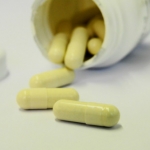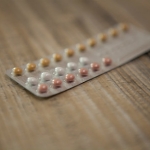During the period before menstruation, many women report experiencing psychological and physical symptoms collectively referred to as premenstrual syndrome (PMS). The fruits, leaves and flowers of Vitex agnus castus (the Chaste Tree) have traditionally been used to relieve these symptoms. While the mode of action is not clear, the effects of the plant seem to mimic those of the corpus luteum, stimulating the production of lutenizing hormone, thereby increasing progesterone production. Schellenberg and colleagues recently studied the effects of agnus castus fruit in women with premenstrual syndrome.
In this study, 178 women that met DSM-III-R criteria for PMS were randomized to receive either agnus castus fruit or placebo for three consecutive menstrual cycles. Patients who received the herbal extract experienced a significant improvement in five of six self-assessed symptoms (irritability, mood alteration, anger, headache, and breast fullness), while bloating was unaffected. Additionally, clinician-rated evaluations showed improvement and the responder rate (50% or greater improvement in symptoms) was higher for the treated group relative to placebo (52% vs. 24%). Treatment was well tolerated; an adverse effect profile for agnus castus could not be determined due to the low incidence of adverse events.
Treatment with agnus castus fruit is shown to be an effective treatment for premenstrual syndrome in this study. Patient and clinician ratings of premenstrual symptoms were shown to improve with treatment. However, as most herbal supplements are not regulated by the FDA, and as they available without a physician’s prescription, more research should be conducted on this remedy. The causes of PMS are still poorly understood, and because treatment is often challenging, agnus castus fruit provides an additional treatment option for women that suffer from premenstrual symptoms.
Giselle LeBlanc







Leave A Comment